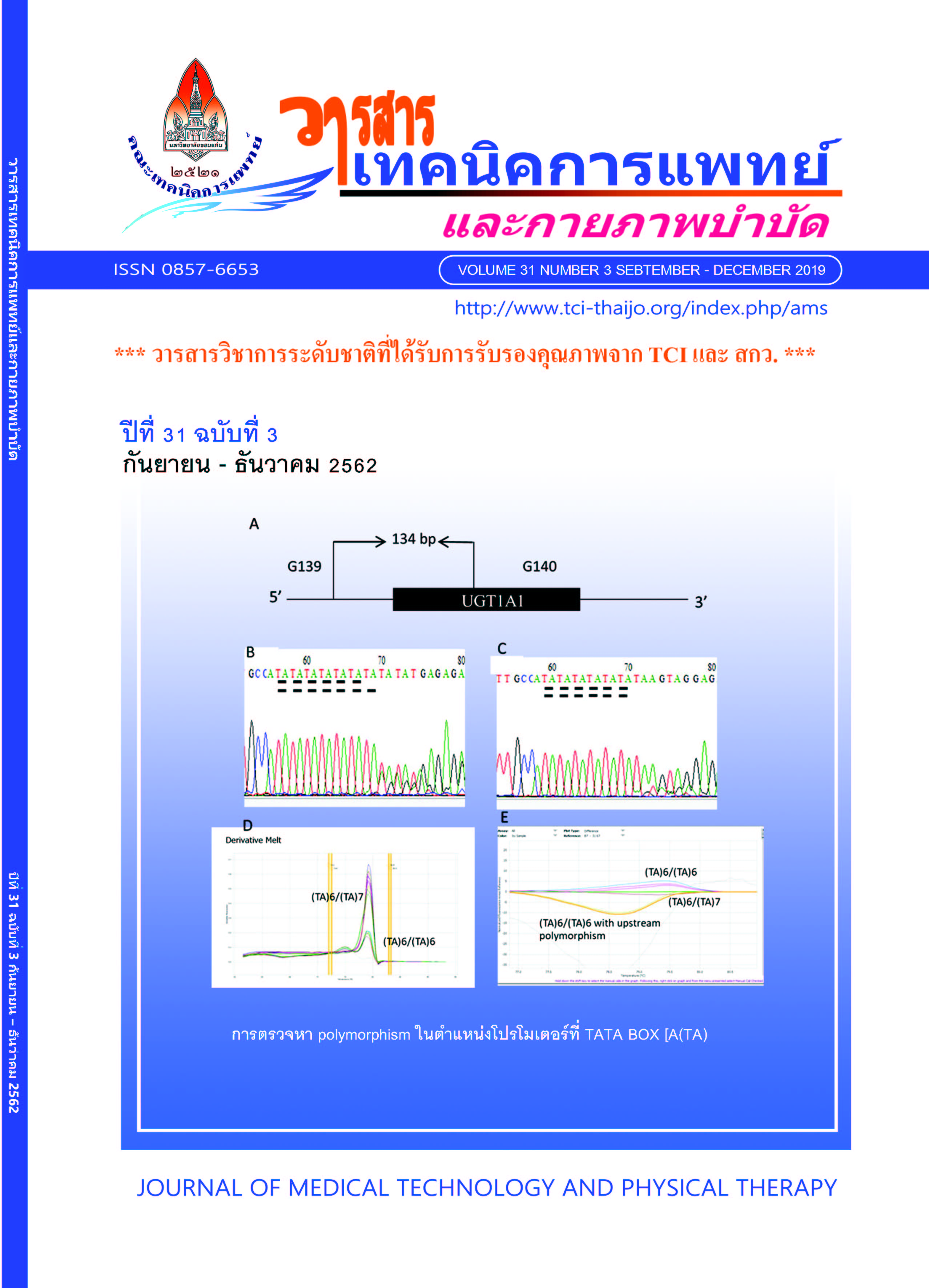Muscle fatigue and health risk assessment on occupational back pain of workers involved lifting and handling products in the industry.
Main Article Content
Abstract
Back pain is often found among workers who have inappropriate ergonomics postures, particularly in forceful movements and manual handling or lifting task which may be affected by ergonomic factors affecting health. The purpose of this study was to assess muscle fatigue and risk of occupational back pain. This cross-sectional descriptive study was conducted in 12 industrial workers who involved lifting and handling products in the industry. Data was collected with an interview questionnaire to assess discomfort, observations with the Rapid Entire Body Assessment (REBA) and NIOSH lifting’s equation. Health risk matrix on back pain was applied and muscle fatigue (MF/time slope) was measured by electromyography (EMG). The results indicated that 16.67% were mostly complaint of back area at low level followed by that complaint of discomfort at a high level of 8.33%. The ergonomics risks from REBA were mostly found to be high risk level while lifting and medium risk level while lowering products. When taken those assessments to health risk matrix of back pain that considered to REBA and levels of discomfort, it was found that workers were at medium level (16.67%) and very high level (8.33%) while lifting, low level (16.67%) and high level (8.33%) while lowering. NIOSH results indicated that 66.67% were exposed to level 3 (high risk) while lifting and 12 subjects were exposed to level 1 (low level) while lowering. The results of muscle fatigue were identified by slopes showed that 75% had muscle fatigue of thoracic erector spinae muscle, most of them (66.67%) had more muscle fatigue at right side (mean: -3.18) and the average of both sides was -4.52 (fatigue). For lumbar erector spinae muscle, 12 subjects had muscle fatigue showing that the left side was -1.08, the right side was -4.54 and the total average of both sides was -7.64. These findings found that industrial workers who involved handling products in the industry had high risk for back pain. It is suggested that there should be promote of workers to avoid inappropriate posture that effects musculoskeletal discomfort especially back area by recommend not to lift over the shoulders and to support the weight that tightly attach to the chest or slightly above the waist and more often adjust the conveyor to get the proper level of work for the body.
Key words: Lifting, REBA, NIOSH lifting, Health risk matrix, Electromyography (EMG)


